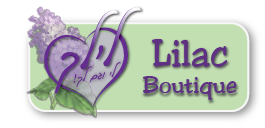Human touch in therapy is one of the most essential factors in creating a solid, trustworthy bond between the therapist and his client. When a therapist makes sure to pat his client’s shoulders or gives him hugs, he is transmitting warmth, care and trust, feelings that can go a long way in enhancing self esteem.
A lack of physical contact may signal an absence of empathy or attention towards the client, which may cause the client to withdraw and shy away from the therapist.
With young children, physical touch occurs spontaneously; it’s natural to hug and cuddle those little people. But as a child grows older, the pats and hugs may become more infrequent. It is therefore important to understand the significance of human touch, so that we can make sure to utilize its benefits even for older clients. (Of course, within boundaries of halachah: teachers and female therapists for girls, and rebbeim and male therapists for older boys and bachurim.)
Some pointers to remember about touch:
- Hand contact should be done with the entire hand; the pat shouldn’t be too strong or too soft, neither should it be a rough clap on the shoulder.
- A child feels pleasant and secure when the other person touches him with the entire palm-finger area, softly but firmly. This type of touch fosters feelings of trust between the therapist and child.
- Appropriate surfaces to touch include the upper back, forehead, temples, shoulders and of course, the hands.
- A pat should not be quick and abrupt, but rather it should last enough for the nonverbal messages of warmth and security to be transmitted. Then, the hand should be removed slowly and gently.
Proper physical contact and attentiveness are vital prerequisites to the success of a therapy session. Active listening is an art and requires a lot of energy. A therapist needs to focus his/her total attention on his/her client and tune into the nonverbal messages being conveyed.
The more a therapist will tweak his attentiveness towards his client, the more he will discover details of his client’s personality that he hadn’t noticed before. Being attentive also means taking note of a child’s restlessness, a strident tone of voice or conversely, a low tone of voice, signs of anger, apathy or other emotions. We, as therapists, need to pick up these signals and build our therapy session in accordance.
By transmitting our care through touch and building trust through genuine attentiveness, we win the client’s confidence and serve as a reliable anchor for him. And by serving as a dependable figure in his life, we empower him to get to know himself better, tap into his abilities and move forward.
“As in water a face reflects a face, so too the heart of man to man.” (Mishlei, 27;19)







